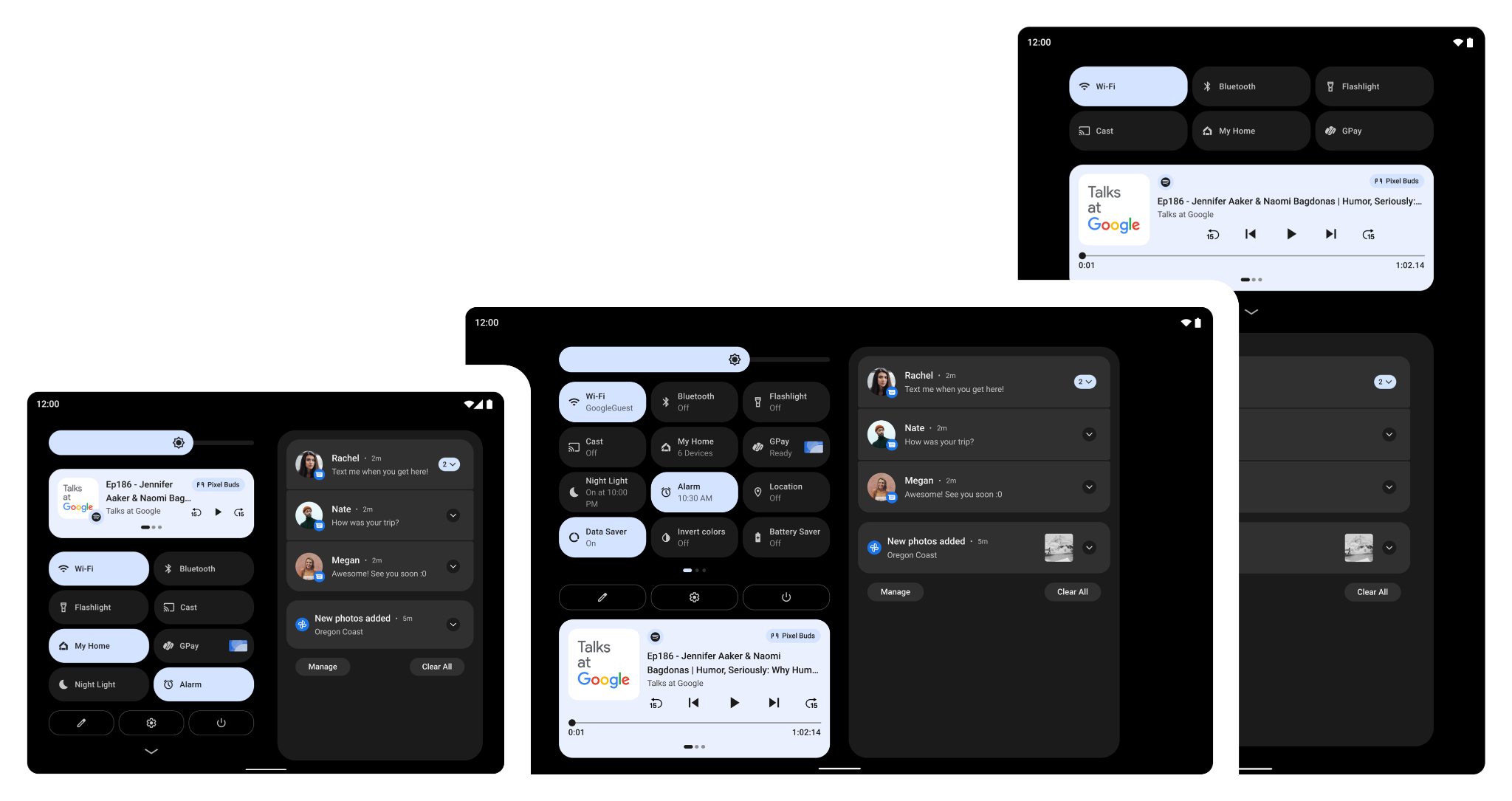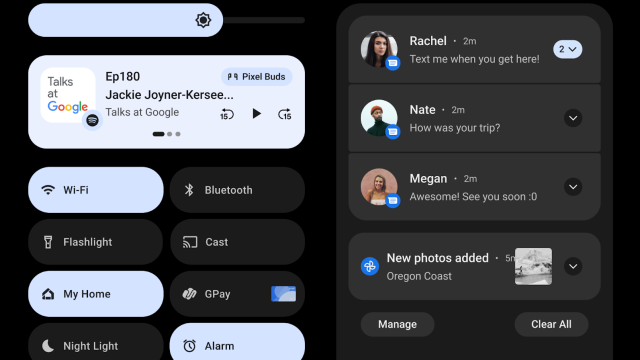Android tablets and foldable phones are a step closer to receiving some much-needed improvements. Google today released the first beta for Android 12L, a version of Android designed to improve the software experience on large-screen devices.
The first attempt to optimise Android for large displays since Honeycomb way back in 2011, Android 12L brings updated user interfaces and new features to enhance multitasking and fix app compatibility issues.
Android was originally built for smartphones, but the mobile OS has found its way to tablets and foldable phones, like the Samsung Galaxy Z Fold 3. Making that transition causes problems, because the operating system doesn’t always scale properly when running on a larger devices. Apps take up tiny portions of the display and are often low resolution. Visual issues aside, Android for years has failed to take advantage of the additional real estate offered by tablets.

Android 12L looks to address those shortcomings by introducing UI changes across the OS, from the notifications panel and quick settings to the lockscreen and home screen. Layouts will now appear in two columns on screens with a pixel density above 600 instead of a single vertical list. This way, you can see more information in your field of view without scanning or scrolling.
Specifically, the notification shade on larger screens will show Quick Settings (wifi, Bluetooth, Flashlight, etc.) on one side and notifications in a separate column. On the lock screen, you will similarly see a larger two-column layout to highlight notifications and the clock. There are some nifty usability upgrades, too. For example, your lock screen pattern or PIN will appear on the side of the screen so you can reach them easier. And for foldables, Google refined the transition from a smaller exterior display to the larger unfolded one.

Android 12L will finally bring native multitasking support to tablets. This comes in the form of a new taskbar that lets you quickly switch to favourite apps or drag-and-drop them into split-screen mode. Any app in Android 12 can launch directly into split-screen mode, even those that aren’t resizable. The taskbar can be hidden or revealed with a tap-and-hold gesture.
Most enticing are Google’s efforts to make apps that aren’t optimised for larger screens more usable. You know, the ones that open as a tiny rectangular window surrounded by unsightly letterboxing. Devs would ideally optimise these apps for larger devices, but in the meantime, Google is handing control over to device manufacturers to do things like configure the app’s aspect ratio or apply rounded corners. Perhaps more importantly, Google Play will assess apps against its guidelines and showcase those that are best optimised for larger screens while warning users of those that aren’t.
Google is currently encouraging developers to use the new APIs and tools built for Android 12L to optimise their apps so they’re ready when the feature drop comes to compatible devices in early 2022.
If you want to mess around with Android 12L before its release, Lenovo is offering a Developer Preview 1 build on the Lenovo Tab P12 Pro. Otherwise, you can use an Android emulator in a foldable or tablet configuration or enroll here to get Android 12L Beta 1 on supported Pixel devices.
